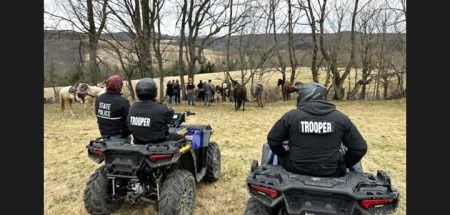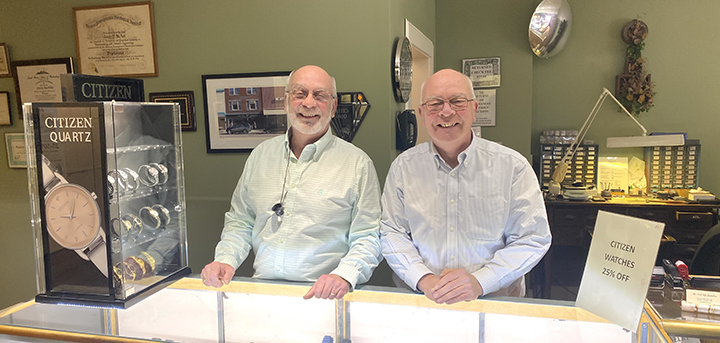Foothold Trap Preparations During The Later Summer Months
Published:
July 27th, 2017
Eric Davis
Mayhood’s Sporting Goods
CHENANGO COUNTY – While trapping season seems to be in the very distant future, it often sneaks up on you once you get busy with other late summer and early fall activities.
I like to try to use the slow time in July and early August to start getting my traps prepared for the fall. This gets you out of the house, if it’s not too hot, and gives you plenty of time to make sure everything is in 100 percent working order.
The first thing I do to start my trap preparation is to get out a tote of traps – or two. I use plastic totes to store the traps to keep them scent-free until they are used. After I pull the traps I put them back in the totes just to make it more organized. I keep my traps separated by what I plan to catch with them.
Typically I will work on my land traps first. These are usually footholds in the #1.75 or #2 coil spring size. I would label them fox/coyote traps. I like to work on them first, because the season for land trapping starts before water trapping does.
I take the traps out of the tote and set them on either a tarp or piece of plywood in the yard. I will go through each trap to make sure there is a trap tag on it – which is required in New York State. The trap tag must have either your NYSDEC ID number or your name and address. I switched to the ID number after moving a couple times and having to invest in new tags each time. I order my tags so that my name is engraved on the tag, this prevents it from getting ruined by a trapped animal chewing on it, the way write-on tags can.
Next, I make sure the chain is in good shape and all of the swivels are working. I have at least three swivels in the chain on the trap, which equates to six swiveling points. Working swivels keep animals from getting hurt when caught in the trap. They run around to try to get out of the trap, causing grass and mud to get caught in the swivel, making the swivel useless. Once all the swivels are bound up, the animal will start spinning around the chain, leading to physical damage to the animal, which makes it hard to release if it is not what you want to catch, such as opossums.
I like to use the ‘crunch-proof’ swivels for the same reason, an animal can’t bend the swivel if it chews on it. The next step is to set the trap and make sure it functions properly. Once a trap has passed this inspection, it gets put into a ‘done’ pile. I use wire to bundle traps in groups of four or six depending on size and chain length. If any traps need work, I try to address the problem right away. If the trap requires parts or something else that I don’t have, I start a list for ordering and will put the trap aside until I can get it fixed. After having all of the foothold traps done, I can start the process for dyeing and waxing.
The first step in the dye and wax process is to remove the old wax from the traps and to remove the factory grease from any new traps. I use a turkey fryer and pot to do most of my dye and wax process but some folks do like using open fires with larger pots to do a bunch of traps at a time.
To remove the wax and grease, I fill the fryer pot about two-thirds with water, add a little bit of ‘The Works’ toilet cleaner, and bring it to a boil.
Once its boiling, I carefully place bundles of traps into the pot until I can’t add any more without them sticking out of the water. I let them set in the water for about 5-10 minutes so that the wax on the traps has had time to heat up and melt.
You will see an oily film on the top of the pot. When I remove the traps from the pot, I hold them above the pot for a few seconds to let the water drip back into the pot and then hang the wire on a nail in a pallet stood on end.
I like to give them a quick spray with a hose if possible. This removes the little bit of wax that sticks to the traps as you pull them from the pot. Repeat this for all of the traps, adding water and cleaner as needed.
I let the traps hang for a couple days to completely dry. Some people leave them for a week or more so that they get surface rust to allow the dye to stick better.
I have started dyeing traps every few years instead of every year. To dye traps, I use logwood dye. It comes as a powder that is added to almost-boiling water. One packet treats a dozen large footholds or two dozen small footholds. Drop the traps in and let them simmer for an hour. Remove and let them hang to dry.
I try to wax traps the day after dyeing them. I have a second fryer pot that I use for just waxing. It takes a good investment of wax to start so that the pot has a good amount of wax in it, but then you only need to add a pound or two of wax each year.
Heat the wax up so that it melts. It will look like fryer grease when its ready. Make sure your traps have absolutely no water on them before adding them to the wax. Slowly place the bundle of traps into the pot.
You will see the wax harden to the traps as they are cold compared to the wax, let them sit and heat up until you see the wax melt off of the traps again. Remove the traps and let the excess wax drip back into the pot. Hang the bundle to let the wax harden.
I go through and remove any clumps of wax that appear from dripping points, like the dog or on the jaw ends.
Now remove the wire that was bundling the traps together. Test each trap for functionality to remove excess wax, add your cable stake – if you use them, and put the traps back into a tote.
– Mayhood’s Sporting Goods
Comments






